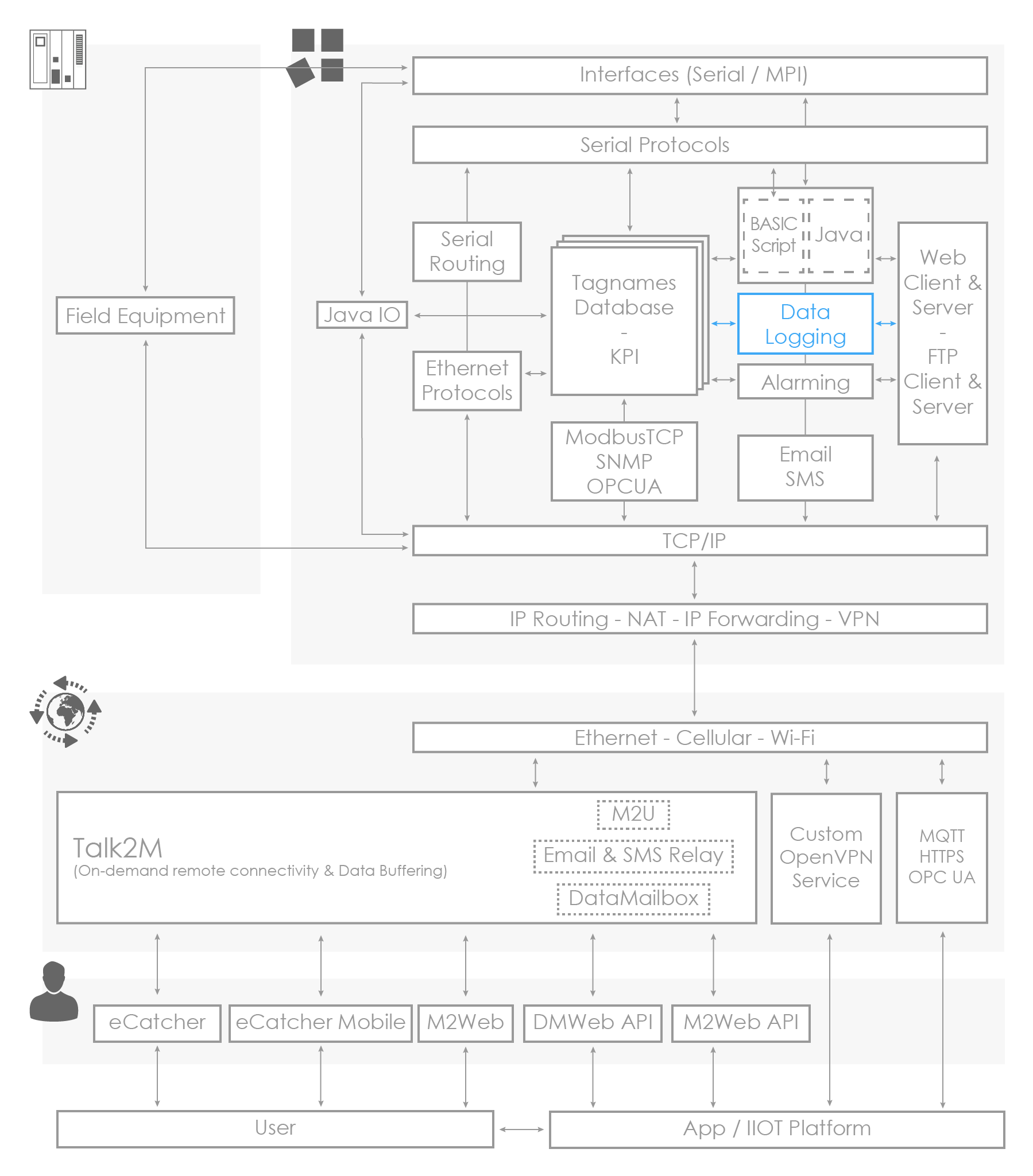Historical Logging
The Ewon gateway integrates 2 different types of logging:
- Realtime data logging
- Historical data logging
For both logging types, the Ewon web interface allows the display of the logged data in a table as well as on a graph.
Realtime logging
The aim of the realtime logging is to record in the Ewon memory (RAM) the Ewon tag values on a short period.
The realtime logging data is not stored permanently inside the Ewon gateway.
To activate the realtime logging of an Ewon tag you need to specify a time span and a logging interval.
Historical logging
You can activate the historical logging option on each Ewon Tag.
You can perform this logging either on value changes or based on a time interval.
On an Ewon Flexy, you can store up to 1.000.000 points. This strongly depends on its memory configuration where the default config allows 250.000 points.
The aim of the historical logging in the Ewon gateway is not to keep the historical data for a very long period of time. Usually, the Ewon gateway is used to store the data locally and push the data to a central server, for example, every hour or once a day.
If you plan on using tags set as string type, you must first set the memory accordingly.
You can retrieve the realtime logging and the historical logging in different formats using the Export Block Descriptors.
